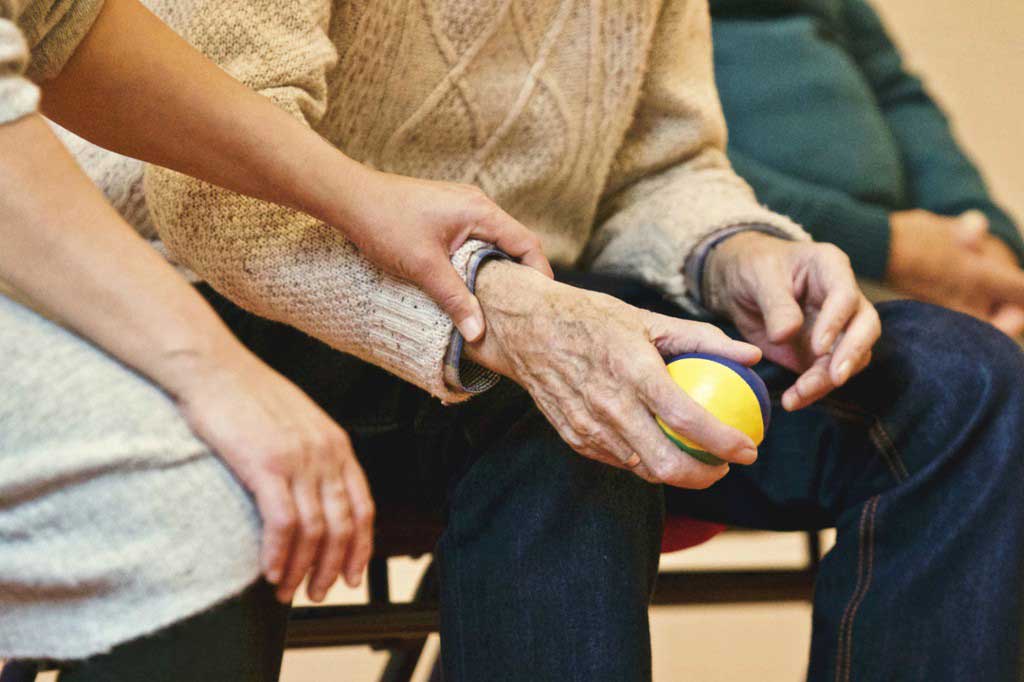Active and secondhand smoking both linked to early menopause
Older people
"Women who are heavy or habitual smokers are more likely to experience the menopause earlier [before the age of 50], a study suggests," BBC News reports. The same study found a weaker link for women exposed to secondhand smoke…
"Women who are heavy or habitual smokers are more likely to experience the menopause earlier [before the age of 50], a study suggests," BBC News reports. The same study found a weaker link for women exposed to secondhand smoke.
The researchers looked at information on more than 93,000 women taken from a major US study.
They found women who smoked were more likely to have had trouble getting pregnant, and reached menopause on average one to two years earlier than women who had never smoked.
Aside from the symptoms of an early menopause, such as hot flushes, an obvious concern is infertility.
Women who'd been exposed to high levels of passive smoking as a child and adult had more trouble getting pregnant than women who never smoked, and had an earlier menopause by about one year.
Smoking has already been linked to fertility problems and earlier menopause because of the effect tobacco toxins have on the reproductive system and hormone levels.
While this new study cannot prove cigarette smoke actually caused these problems, it certainly does suggest cigarette smoke – either from smoking or passive smoking – has an effect on women's fertility. This is alongside a multitude of other known adverse health effects: one more reason, if you really needed one, to quit smoking.
Where did the story come from?
The study was carried out by researchers from Roswell Park Cancer Institute, the School of Public Health and Health Professions, the University of Pittsburgh, Harvard Medical School and the University of New York, and was funded by the US National Institutes of Health.
It was published in the peer-reviewed journal Tobacco Control and is available on an open-access basis to read free online.
Some reports in the media focused on smoking and early menopause, which is not a new finding. The Daily Mail focused on the link with passive smoking, but the figures used in the headline – a 20% raised risk of infertility and a two-year earlier menopause – were exaggerated.
As the story beneath the headline makes clear, the highest levels of passive smoking were linked to an 18% increased risk of infertility and an average 13 months earlier menopause.
Frightening people with inaccurate information, even if it is for a good cause, can be counterproductive as you can lose credibility.
What kind of research was this?
This cross-sectional observational study asked women who had been through the menopause a series of detailed questions about their lives. The researchers wanted to know how being a smoker and exposure to cigarette smoke affected menopause age and fertility.
This type of study relies on people remembering and answering questions accurately from one point in their lives. It can't capture information about how habits change over time reliably.
That said, studies that track people over the course of decades, such as the groundbreaking Framingham Heart Study, can be expensive to run, so this study design is reasonable.
What did the research involve?
The researchers looked at questionnaires filled in by women who'd been through the menopause to see whether there was a link between their smoking habits and smoke exposure, and their chances of having had problems getting pregnant or having an earlier menopause.
After adjusting for other factors (confounders), they calculated whether smoking was linked to the risk of infertility or menopause before the age of 50.
The study is based on questionnaires filled in by 93,676 women aged 50 to 79 between 1993 and 1998.
The women were asked whether they'd been unable to conceive after a year or more of trying (when the cause was not male infertility), and how old they were when they had the menopause.
They were also asked whether they had ever been a smoker (defined as smoking 100 or more cigarettes in their lifetime) and whether they had been exposed to other people's cigarette smoke at home or work.
The questionnaires asked for a lot of detail about the amount people smoked and the ages at which they smoked, as well as for other information on factors that can affect fertility, such as exposure to chemicals, low body weight, very intense exercise and alcohol use.
The researchers adjusted their figures to take account of these confounding factors. They calculated the overall risk of earlier menopause (before 50) and infertility, using women who'd never smoked and never been exposed to cigarette smoke at home or work as a comparison group.
They looked at whether increased exposure to secondhand smoke, or increased years smoking or exposure to cigarette smoke, affected the risk. They also calculated the average age of menopause for women in these groups.
What were the basic results?
Women who had smoked were more likely to have had infertility (odds ratio [OR] 1.14, 95% confidence interval [CI] 1.03 to 1.26) and to have reached the menopause before the age of 50 (OR 1.26, 95% CI 1.16 to 1.35).
For women who'd never smoked themselves but had been exposed to other people's smoke, the results were more complicated. Looking at this group overall, the results did not show an increased risk of early menopause or infertility. However, women who'd had the highest levels of exposure did have an increased risk of infertility (OR 1.18, 95% CI 1.02 to 1.35).
The highest levels of exposure meant 10 or more years of exposure to cigarette smoke in the home as a child, plus 20 years or more exposure to smoke in the home as an adult, plus 10 years or more exposure to smoke in the workplace.
But, with increased awareness, these types of environments are now becoming a thing of the past in developed nations.
The women with high levels of passive smoking also had an increased chance of menopause before 50 (OR 1.17, 95% CI 1.05 to 1.30).
The average age of menopause for women who had never smoked and had no exposure to other people's smoke was 49.4 years. For women who had smoked it was 48.3 years, while it was 48.8 years for women who had not smoked but had exposure to secondhand smoke.
How did the researchers interpret the results?
The researchers said their results confirmed the results of earlier studies looking at smokers, and supports previous findings that women exposed to passive smoking had higher infertility and early menopause risk.
They say their study "strengthens the current evidence that all women need to be protected from active and passive tobacco smoke".
Conclusion
We hardly need more evidence to show smoking is bad for our health, but the suggestion that it may slightly increase the risk of an early menopause and chances of having problems getting pregnant could be important to some women. More surprising is that high levels of secondhand smoke exposure may also have a similar effect.
This is a big study with a lot of detailed information about smoking and fertility. But it has some important limitations. It uses quite old data taken from a study of women who were in middle age in the 1990s.
Smoking habits have changed a lot in the last 20 years, not only for active smoking but for passive smoking, too. For example, these women would have been children in the 40s and 50s, when people smoking in the home was far more commonplace than it is now. This means a similar study now might have different results.
The results also rely on women aged 50 to 79 accurately remembering events that happened in their childhood and early adulthood.
Also, because the study was cross-sectional, we don't know how the women's behaviour changed over time. For example, a woman might have started smoking after she'd finished trying for children, which means it could not have affected her chances of infertility.
Observational studies can't prove one factor causes another, so we don't know that smoking or smoke exposure were the direct cause of earlier menopause or fertility problems.
Although the researchers did attempt to take account of various socioeconomic, health and lifestyle factors, we don't know whether other factors associated with smoke exposure could have had an influence.
Nor can this study tell us the biological mechanism behind any link – for example, whether it is because tobacco toxins affect reproductive hormones.
Despite these caveats, we do know cigarette smoke contains dangerous toxins and these may affect women's fertility, as well as having a multitude of other bad effects on health.
This study also suggests evidence of another way in which secondhand smoke exposure can be harmful to the health of both children and adults.
Quitting smoking is always the first step towards a healthy lifestyle. See our stop smoking guide for help with kicking the habit.






 Subscribe
Subscribe Ask the doctor
Ask the doctor Rate this article
Rate this article Find products
Find products








